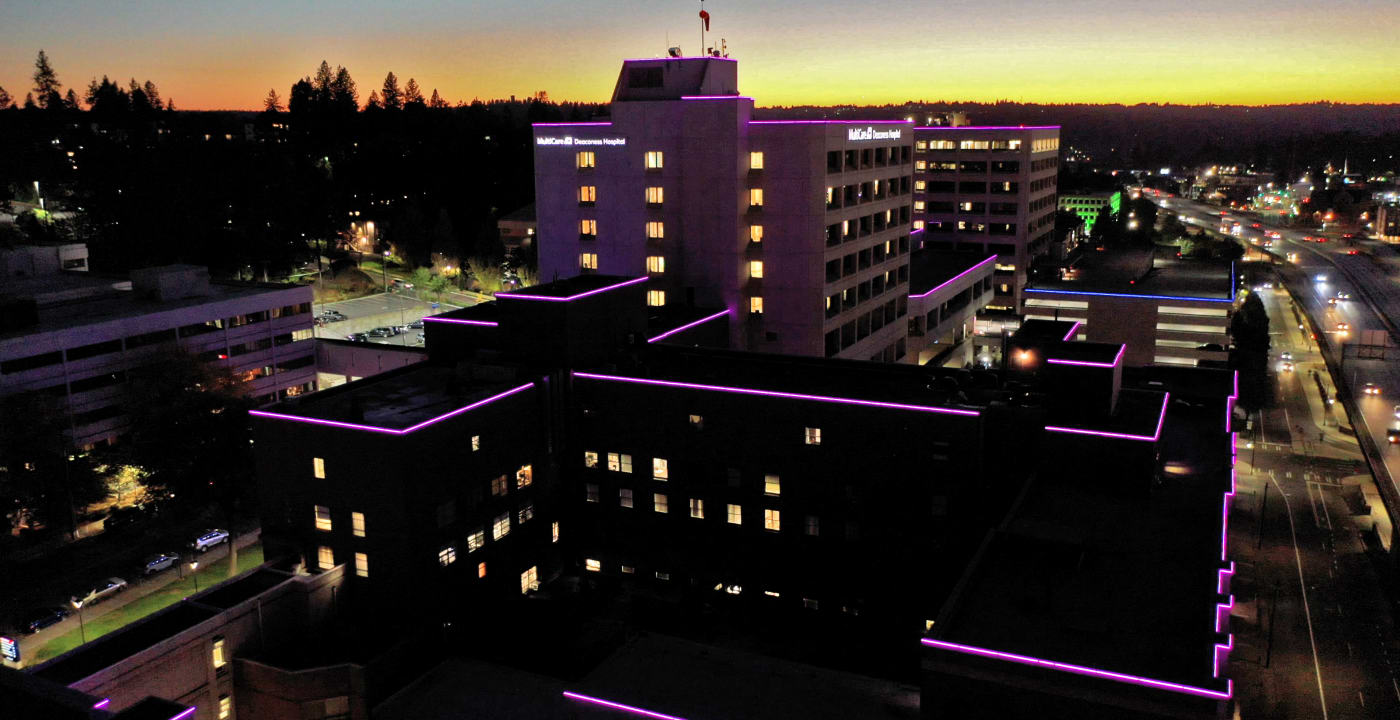Domestic Violence Action Month: Learn the warning signs and support survivors with compassion

In honor of Domestic Violence Action Month, we asked the YWCA Spokane’s community engagement coordinator, Jemma Riedel-Johnson, MSC, to walk us through their Domestic Violence (DV) 101 course and show us how we can take action ourselves.
Domestic violence can and does impact people from every walk of life, which is why this free DV course is open to anyone in the community, says Riedel-Johnson. With a focus on how to help survivors, learn about their experiences and prevent future incidents, the training is an opportunity to be part of the solution.
“There’s a lot of misconceptions floating around in the community. I don’t think people realize how common and pervasive it is, and how complicated it is,” she says. “We’ve come a long way from thinking DV is a private matter. … [But] there’s a stigma, especially to come forward as a survivor.”
YWCA Spokane focuses on providing resources to survivors of intimate partner violence (IPV), which falls under the larger umbrella of DV, Riedel-Johnson explains. The key differentiator is the distinct relationship and/or attachment between the perpetrator and survivor of IPV.
What is intimate partner violence?

The YWCA Spokane defines domestic violence as a pattern of controlling behavior used to maintain power in a relationship by one partner over the other.
“A lot of times, people won’t come to us until after it becomes physical,” Riedel-Johnson says. “But oftentimes, we uncover other things have been going on for some time.”
To illustrate how IPV can present itself, Riedel-Johnson refers to the Power and Control Wheel (pictured). Physical and sexual violence are on the outside because it’s what people often think of first, but the others within the wheel are much harder to recognize and prove.
For example, what could begin as one person being “better with numbers” and handling the finances can cross the agreed-upon line into economic abuse when requests to change the arrangement are denied and resources are withheld.
Internal and external warning signs
While there will never be two identical scenarios, there are common IPV indicators both survivors and outsiders can recognize, says Riedel-Johnson.
To those in the relationship, indicators include the use or threats of violence; taking/withholding money; monitoring phone or social media; controlling appearance; isolating from friends and family; showing feelings of jealousy, possessiveness and insecurity; insulting/demeaning/shaming; or forcing sex.
Those looking from outside the relationship may be able to pick up on these signs: frequent and unexplained injuries; appearing anxious or on edge; always being on the phone; changes in work performance or behavior; arriving late/leaving early; being overly apologetic; or losing interest in hobbies/activities.
Riedel-Johnson says depression and domestic violence often go hand-in-hand, and some of these warning signs can be indicators of one or both.
“Even with all these listed as potential warning signs, sometimes we will never know what is going on at home,” she says. “Perpetrators are master manipulators and can hide the abuse.”
Why not just leave, then?
Just as perpetrators won’t change unless they want to, many survivors won’t seek support until they are ready or feel safe enough to do so, Riedel-Johnson says.
There’s a long list of reasons someone may stay or return to their relationship:
- Danger or fear of retaliation
- Concerns over children and pets
- Financial or housing dependency
- Lack of awareness of resources and support available
- Cultural/religious/familial pressures
- Language barriers
- Shame
Some people believe their abuser will change or are too invested in the relationship, she adds.
Asking a survivor or suspected victim to “just leave” can be one of the most harmful things you could do, Riedel-Johnson says.
“It is textbook victim blaming instead of holding the perpetrator responsible,” she says. “The best thing you can do is love them. Love is so powerful, and so is the hope that things will get better.”
How to help a survivor

Knowing if and when to act can be a tricky line to walk, Riedel-Johnson says, because there’s no checklist. For some, it may depend on the relationship and level of trust, while for others it may mean asking the right question.
“Ten times in a row you might be told everything’s fine,” she says. “But that 11th time they could say something else.”
Some of the most important things to remember: Listen and believe survivors, remind them it’s not their fault, tell them resources are available, and do so in a nonjudgmental and supportive manner.
It’s also just as important to avoid ultimatums, pressuring the survivor, questioning the severity of the abuse, speaking poorly of the abusive partner rather than focusing on the behavior, making promises you can’t follow through on, or making the situation more difficult or dangerous, Riedel-Johnson says.
And of course, one of the best things we can do is educate ourselves and know the resources available, such as those at the YWCA Spokane. Their 24-hour helpline is open to survivors and friends/family with questions or concerns via phone, text or email.

“It doesn’t matter where you fall on the Power and Control Wheel,” she says. “You’ll get the same services and support from YWCA Spokane.”
Learn more about domestic violence in the Inland Northwest, and how YWCA Spokane is partnering with the SRDVC to prevent abuse and provide support to survivors in ‘This isn’t hopeless’: SRDVC and YWCA highlight power of community, prevention against domestic violence.
“Partnering for healing and a healthy future” is MultiCare’s mission, and it inspires us to form connections that help improve the quality of life for our communities. Community organizations all around us are doing amazing work, and we’re inspired and excited to support that work.
Stories from our Community is an ongoing series conceived to dive into some of these organizations*, bring their stories to life and spread the word about how they are making our communities better.
*Some of the organizations profiled in this series are recipients of MultiCare’s Community Partnership Fund, which awards funds to nonprofit organizations working on initiatives, programs and projects that improve our community.




